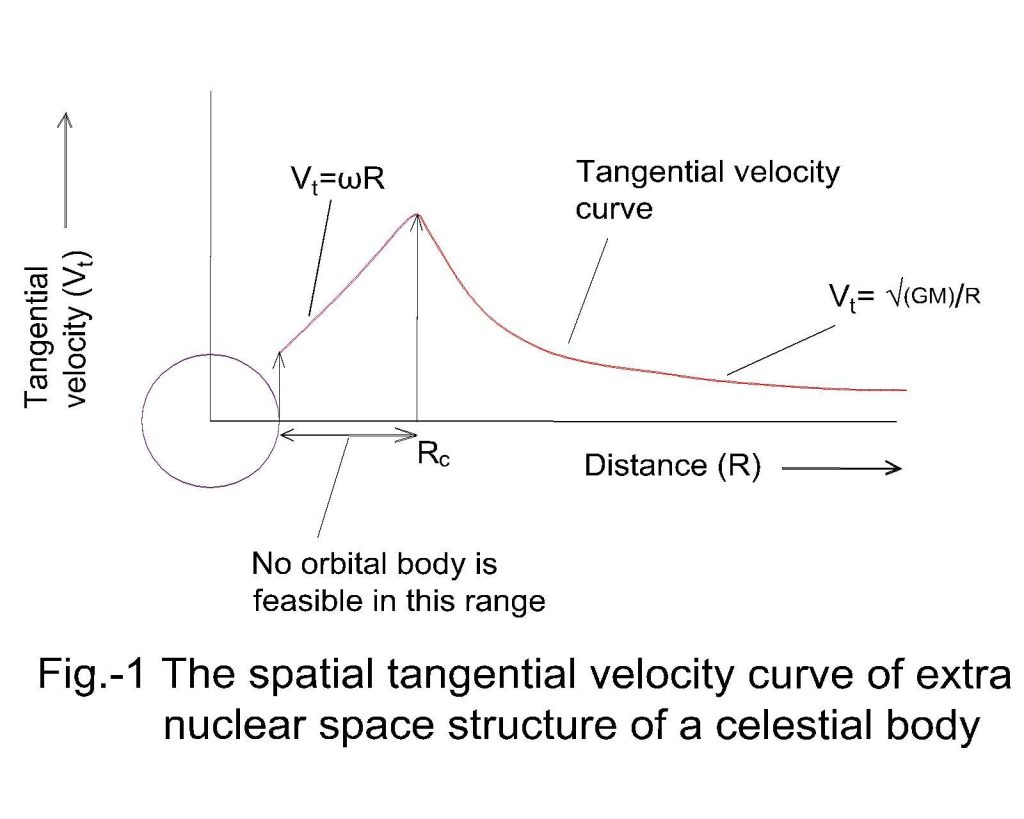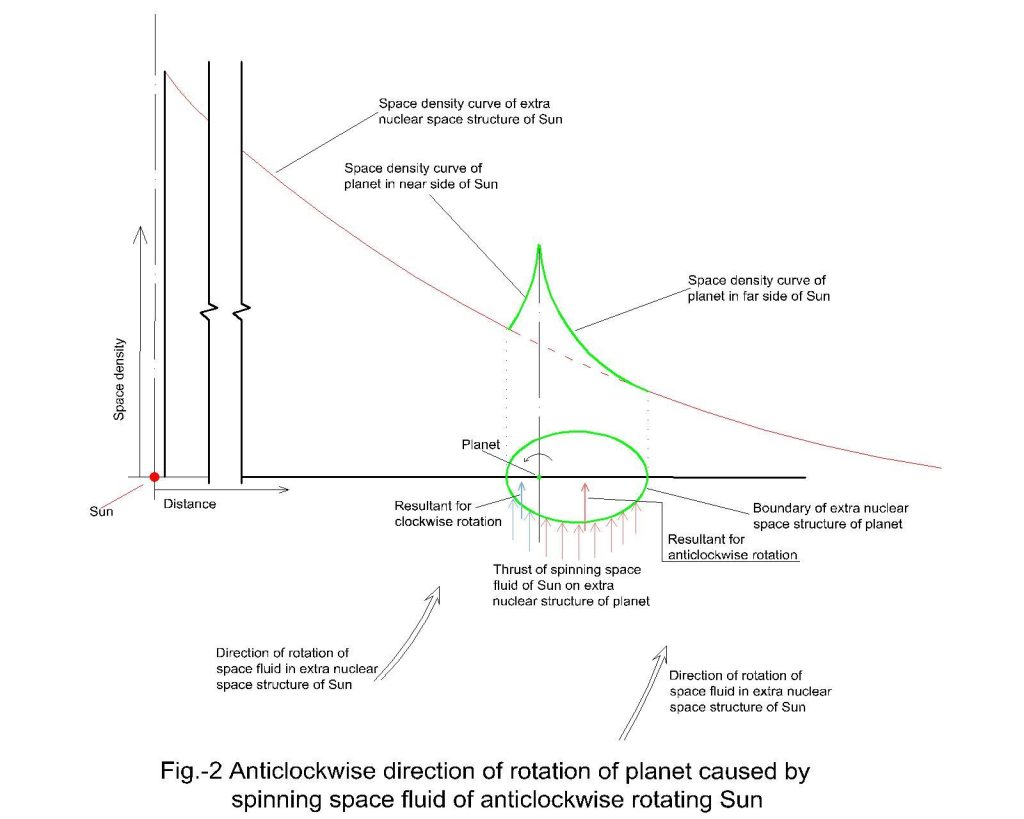INSTITUTE OF PHILOSOPHY OF NATURE
Abstract
The planets Venus, Uranus and Pluto are reported to have retrograde rotation. And the satellites of Ananke group, Carme group and Pasiphae group of Jupiter, Phoebe of Saturn and Triton of Neptune are reported to have retrograde revolution. However, according to this author, the above retrograde rotation & revolution of planets and satellites is the reality they are so identified with due to erroneous characterisation of the north pole. Thus, in reality, all orbital bodies revolve & rotate in prograde without exception which makes one comfortable to develop a theory for the same. The generally accepted nebular theory on formation of the solar system gets a boost by this new finding. In any way the nebular theory cannot be accepted as a standard theory due to many fouling limitations. The distribution of angular momentum among Sun and planets alone is enough to discard the nebular theory. Further, it is not possible to indefinitely maintain the state of rotational motion and orbital motion developed at the time of formation without ignoring the resistance to motion offered by the physical nature of space. An alternate explanation by conceptualizing the association of a space structure surrounding a celestial body helps in developing a new fluid dynamic model to explain all possible motions of planets and satellites in the solar system. In the new fluid dynamics model all orbital celestial bodies with their extra nuclear space structure are housed in the spinning extra nuclear space structure of a rotating nucleus-celestial-body. The orbital bodies get their drive for prograde rotational and orbital motion from the spinning extra nuclear space fluid of the central body. The new mass-space interaction proposed elsewhere by this author helps to promote the formation of extra nuclear space structures surrounding all celestial bodies and functioning of a fluid-dynamics in the solar system. The fluid dynamics model provides proper justification to prograde rotation and revolution of planets and satellites. The paper introduces the pre-conditions of fluid dynamics model and provides justification for the prevailing prograde motion. Keywords: Fluid dynamics, Planet and satellites, Spinning, Nuclear space.Introduction
The sun has many orbital bodies (planets) and planets also have many orbital bodies (satellites). The sun rotates anticlockwise when viewed from the North Pole end. Planets revolve around the sun anticlockwise and rotate about their own axis anticlockwise when viewed from the north-pole end. The direction of revolution and rotation stated above are prograde motion. Few planets and satellites are recorded to have reverse rotation and revolution (retrograde motion) violating the general trend. This author, however, has shown that the recorded retrograde motions are not a reality but a conclusion drawn due to erroneous characterization of the North Pole. Hence, there is only one trend of prograde motion only. This paper analyses the dynamics for the prograde motions. The physical space has dimension; hence geometry is applicable to space. Every physical entity has internal interaction property and external interaction property. Geometry has a role on both the properties. The internal interaction property of constituents is responsible for formation and stability of the entity whereas, the external interaction property that promotes its dynamics. The contents of a physical entity per unit volume (density) may be different in different states of the physical entity. Thus space, a physical entity, can have different space density (space content per unit volume). Hence different physical gas or physical space pockets can have different internal properties. The inherent internal property of gas is a function of space density (space content per unit volume), nature of micro particles present, the number density of different types of micro particles and the electric charge state of particles. Likewise, the inherent internal property of a space pocket is a function of space density, nature of space matter particles, the number density of different types of space matter particles and the non-electric charge state (photonic charge state) of the particles. The atoms and molecules are space matter particles in gaseous state of matter and the crowding of electrons in space are space matter particles in electronic gas. The author has justified the light particle as mass bearing particles [2]. In the light of the above the so-called space, in reality, is a photonic gas, therefore, a mass-space integral system [2]. Lack of perception to rest mass of light particles (matter particles of micro-micro domain), the intrinsic property of space fluid is attributed to the property of geometry through space-time curvature. Thus, reality is understood through unnatural manners. In any case both spaces with known or unknown space matter particles are physical. Therefore, space itself is a fluid and has a role in the dynamics of the celestial body in the solar system.Discussion
We know the earth and its atmosphere is rotating at the same angular speed. If the atmosphere would not have been rotating then we would have been experiencing super-super- cyclones all the time on the surface of the earth. The atmosphere of the earth extends to far distances but not realized that far where it exceeds the earth-moon distance. The atmosphere thins down with distance from the earth. Beyond a distance we consider it as space. Initial perception of space was relational and exists in relation to matter. The gap (spacing) between celestial bodies is considered space. Subsequently the physical nature of space was realized. In the absence of matter the space becomes geometrical. The property of physical space without matter was conceptualized by making distortion of Euclidean geometry as well as introducing mathematical objects and events. The non-geometrical parameters (properties of space) were added to conventional three Cartesian coordinates to solve dynamics of matter in space. The 3D geometry is complete to locate the spatial location of objects and events. We do consider many other parameters such as mass for dynamics of matter along with 3D geometric parameters to solve different problems of dynamics. As long as the Euclidean coordinates are not tampered, the mental perception is not disturbed. The mental perception is natural, obeys the laws of nature. Any distortion to 3D geometry is unnatural; hence not a reality of nature. Our purpose is to understand nature in a natural manner but not impose man-made conditions to understand natural phenomena. Then only our understanding would be close to reality. As of today, we don’t have a universal concept of space. The significance of space changes for propagation of light waves, for resistance free motion in space and for space time curvature. In the light of the understanding in Vedic science this author considers space itself is physical [1] and this concept useful in justifying the motions of orbital bodies.Tangential velocity profile of space fluid in the extranuclear space structure of a celestial body
The space fluid (space structure containing space matter particles) in contact with the surface of a celestial body rotates at the same angular speed as that of the celestial body. It is for this reason we do not experience any relative wind speed due to rotation of the earth. For example, the earth rotating at an angular velocity ω has its lower space-structure (lower atmosphere) spinning at the same angular velocity ω. As the distance of space pocket from the earth increases, gravity decreases inversely as the square of distance but centrifugal force increases directly with distance for a constant angular velocity. The centripetal force (gravity) on an air pocket is given by: Gravitational attraction = (G MEMa)/R2 And the centrifugal force on the air pocket (CF) is given by CF= Maω2R’ (Where CF= centrifugal force; ME = mass of the earth; Ma= mass of air pocket; ω = angular velocity of air pocket; R= radial distance of space pocket from centre of the earth.) When R increases, gravity decreases rapidly and CF increases linearly. At some distance (R=Rc), CF becomes equal to Gravity. Beyond Rc the CF is greater than gravity. Thus, the gravitational bond to outward space-structure breaks off thereby the torsional coupling for spinning the outer space structure vanishes. Thereafter the spinning speed of the outer space structure slows down due to its contact with non-spinning interplanetary space about the axis of the earth. When the spinning speed slows down, the CF reduces and gravitational coupling to outer space structure is re-established. The rotation of outer extra nuclear space structure beyond Rc is governed by brake & make of gravitational coupling. Thus, the spinning speed (the spatial tangential velocity vt) of the space medium beyond Rcis given by the following equation. Vt = √ (GM)/R Prograde orbital motion The tangential velocity profile of extra nuclear space structure of a rotating nucleus celestial body is shown in Fig-1. The orbital body located in the extranuclear space structure within R0 approaches the velocity of the space fluid where the centrifugal force is less than the gravity. Therefore, bodies located within Rc are not stable as they are gravitated onto the central body. But the bodies located beyond Rc gains their tangential velocity from the spinning spatial velocity where the centripetal force (gravity) and the centrifugal force are equal and opposite. The orbital bodies beyond Rc floats in the extranuclear space structure under zero gravity. All orbital bodies in the floating state acquire their orbital motion from the spinning motion of the space fluid of the central body. To visualize the phenomenon, throw some floating objects onto the water of a flowing river. It would be seen that all floats move in the direction of the flowing water (prograde) motion and not a single float has motion in reverse direction (retrograde motion). Hence, the orbital bodies have the same sense of revolution as the direction of rotation of the central body where they are identified having prograde revolution.
Prograde rotation of orbital body
Like the orbital motion of an orbital celestial body driven by the spinning motion of the extra nuclear space structure of the central gravitating body, the rotational motion of the orbital body is also initiated by the spinning motion of extranuclear space structure of the central body. This makes all orbital bodies to rotate in the same direction as the direction of the rotation of the central body. The mechanism of the rotation is now described with reference to Fig.2.

Conclusion
The new interaction of mass and space results in the formation of an extra nuclear space structure surrounding every celestial body. Thus, the planets are positioned in the spinning extra nuclear space structure of the sun and the satellites of a planet are positioned in the spinning extra nuclear space structure of the planet. The new structural features of the solar system lead to operation of fluid dynamics instead of motion of orbital bodies in free space as considered today. The present state of prograde motions (rotation and revolution) of all planets and all satellites has been justified properly from fluid dynamics. Further the fluid dynamic model is productive in identifying the mistake in the very characterisation of retrograde motion. The nebular theory on formation of the solar system cannot be accepted because the distribution of angular momentum totally disagrees with the hypothesis. The new proposed fluid dynamics justifies the prograde rotation and revolution of all orbital bodies in the solar system. The fluid dynamics model is independent of the preconditions of the formation of the solar system. It stands as the only satisfactory explanation for the prograde rotation and revolution and has scope to explain other motions of celestial bodies in the solar system. Thus, the proposed theory has a greater stand.
